The Relationship Between Generative AI And Cryptocurrency

Generative AI, also known as artificial intelligence, refers to the development of computer systems or software that possess the ability to perform tasks that typically require human intelligence. These systems are designed to analyze, interpret, and respond to data or stimuli in a manner that simulates human thought processes. Generative AI models are created using machine learning techniques, which involve training algorithms on large datasets to recognize patterns, make predictions, and generate outputs.
Generated AI can be classified into various categories, including:
1. Machine Learning (ML): ML is a subset of AI that focuses on training algorithms to learn from data and improve their performance without being explicitly programmed. It involves statistical techniques and mathematical models to make predictions or decisions based on patterns identified in the data.
2. Deep Learning (DL): DL is a subfield of ML that utilizes artificial neural networks inspired by the human brain’s structure and functionality. Deep learning models, also known as deep neural networks, are capable of learning and representing complex patterns and relationships in large datasets. DL has achieved remarkable success in various areas such as image and speech recognition, natural language processing, and autonomous vehicles.
3. Natural Language Processing (NLP): NLP involves the interaction between computers and human language. It enables machines to understand, interpret, and generate human language, enabling tasks such as language translation, sentiment analysis, chatbots, and voice assistants.
4. Computer Vision: Computer vision focuses on enabling machines to understand and interpret visual information from images or videos. It involves tasks such as object recognition, image classification, and image generation. Computer vision has applications in fields like autonomous vehicles, surveillance systems, and medical imaging.
5. Robotics: Robotics combines AI with physical machines to create intelligent robots capable of perceiving, learning, and interacting with their environment. AI-powered robots can perform tasks that require physical dexterity, decision-making, and adaptability, making them useful in areas like manufacturing, healthcare, and exploration.
Cryptocurrency, on the other hand, refers to a digital or virtual form of currency that utilizes cryptography for secure financial transactions, control the creation of new units, and verify the transfer of assets. Unlike traditional fiat currencies issued by central banks, cryptocurrencies operate on decentralized networks, typically based on blockchain technology.
Key aspects of cryptocurrency include:
1. Blockchain Technology: Cryptocurrency rely on blockchain, a decentralized and distributed ledger that records all transactions across a network of computers. The blockchain ensures transparency, immutability, and security by utilizing cryptographic algorithms to validate and verify transactions.
2. Decentralization: Cryptocurrencies are not controlled by any central authority or government. They operate on a peer-to-peer network, allowing participants to transact directly with each other without intermediaries. This decentralization feature enhances security, reduces transaction costs, and enables financial inclusion.
3. Digital Tokens: Cryptocurrencies are represented by digital tokens, which are created and managed through cryptographic techniques. These tokens serve as a medium of exchange and store of value within the cryptocurrency ecosystem. Examples of popular cryptocurrencies include Bitcoin (BTC), Ethereum (ETH), and Litecoin (LTC).
4. Mining: Mining is the process by which new units of cryptocurrency are created, and transactions are validated and added to the blockchain. Miners use powerful computers to solve complex mathematical problems, contributing computational power to the network. In return, they are rewarded with newly minted cryptocurrency units.
5. Security and Anonymity: Cryptocurrencies employ cryptographic techniques to secure transactions and control the creation of new units. Transactions are pseudonymous, meaning they are associated with addresses rather than real-world identities. This provides a certain level of privacy and reduces the risk of fraud or identity theft.
Cryptocurrencies have gained popularity due to their potential for financial innovation, decentralized nature, and the ability to facilitate fast and low-cost cross-border transactions. They have also inspired the development of various applications and platforms, such as smart contracts (self-executing contracts based on predefined conditions) and decentralized finance (DeFi) protocols that offer alternative financial services. However, it is important to note that the cryptocurrency market is highly volatile, and investing in cryptocurrencies carries risks.
How are generative AI and cryptocurrency related?
Generative AI and cryptocurrency are related in a few ways. While they may seem distinct, both fields have experienced significant advancements and innovations in recent years, and their intersection has led to new possibilities and applications. Here are some ways in which generated AI and cryptocurrency are related:
1. Trading and Investment Strategies: Generated AI has been employed to develop sophisticated algorithms and models for cryptocurrency trading and investment strategies. AI-based trading bots can analyze vast amounts of historical and real-time data, identify patterns, and make informed trading decisions. These bots can execute trades automatically based on predefined strategies, taking advantage of market fluctuations and potentially generating profits.
2. Market Analysis and Predictions: Generated AI models can be used to analyze cryptocurrency market trends and make predictions about price movements. By training AI models on historical data, they can learn patterns and correlations that humans might miss. AI algorithms can process large volumes of data, including market news, social media sentiment, and historical price data, to generate insights and forecasts that traders and investors can utilize.
3. Fraud Detection and Security: Cryptocurrencies face security challenges, such as hacking attempts, fraudulent activities, and money laundering. Generated AI can be used to develop advanced security systems to detect and prevent these threats. AI algorithms can analyze transaction patterns, identify suspicious activities, and flag potential fraud or security breaches. Additionally, AI can enhance user authentication and encryption techniques to strengthen the security of cryptocurrency transactions and wallets.
4. Blockchain Optimization: Blockchain technology, which underlies cryptocurrencies, can benefit from generated AI. AI can be employed to optimize blockchain networks by improving scalability, transaction speed, and energy efficiency. AI algorithms can analyze network performance, identify bottlenecks, and propose solutions to enhance the efficiency of blockchain protocols. This integration can potentially overcome some of the limitations of current blockchain implementations.
5. Tokenization and Asset Management: Generated AI has enabled the emergence of tokenization, which involves representing real-world assets, such as real estate or art, as digital tokens on a blockchain. Tokenization allows for fractional ownership, increased liquidity, and easier transferability of assets. AI can facilitate the management and valuation of these tokenized assets by automating processes such as asset evaluation, market analysis, and portfolio management.
6. Enhanced User Experiences: AI-powered chatbots and virtual assistants can enhance the user experience in the cryptocurrency space. These bots can provide real-time market information, answer user queries, and assist with trading operations. By leveraging natural language processing and machine learning, AI-powered assistants can offer personalized recommendations, analyze user behavior, and provide tailored insights and suggestions to cryptocurrency users.
It is important to note that while the integration of generated AI and cryptocurrency offers numerous opportunities, it also poses challenges. Ethical considerations, transparency, and regulation are crucial factors to ensure the responsible and secure deployment of AI in the cryptocurrency domain. As both fields continue to evolve, the intersection between generated AI and cryptocurrency is likely to foster further advancements and innovation.
How can generative AI be used to create new cryptocurrency projects?
Generative AI can play a role in creating new cryptocurrency projects by assisting in various aspects of their development. Here are some ways in which generator AI can be used in the creation of new cryptocurrency projects:
1. Idea Generation and Conceptualization: Generated AI can be utilized to generate new ideas and concepts for cryptocurrency projects. By training AI models on vast amounts of data, including existing projects, market trends, and user preferences, it can generate novel ideas for features, use cases, or innovative approaches within the cryptocurrency ecosystem.
2. Smart Contract Development: Smart contracts are self-executing contracts with the terms of the agreement directly written into code. Generated AI can aid in the development and optimization of smart contracts by automating parts of the process. AI models can analyze existing contracts, identify patterns, and generate code snippets or templates for common contract functionalities. This can help developers streamline the creation and deployment of secure and efficient smart contracts.
3. Token Design and Economics: Generated AI can assist in designing the tokenomics of a new cryptocurrency project. Tokenomics refers to the economic and incentive structure of a token, including token distribution, supply mechanisms, governance models, and utility within the ecosystem. AI algorithms can analyze market data, simulate various tokenomics scenarios, and optimize token parameters to ensure a balanced and sustainable ecosystem.
4. Market Analysis and Predictions: AI can help analyze the cryptocurrency market and predict future trends. By training AI models on historical market data, news sentiment, and social media discussions, it can provide insights into market behavior and identify potential opportunities for new cryptocurrency projects. AI-generated market predictions can guide project creators in making informed decisions and developing strategies based on market dynamics.
5. Community Engagement and Sentiment Analysis: Building a strong community is crucial for the success of a cryptocurrency project. Generated AI can assist in community engagement by analyzing social media conversations, forums, and other online platforms to understand user sentiment, identify key influencers, and detect emerging trends. This information can help project creators tailor their communication strategies, address community concerns, and build a loyal and engaged user base.
6. Risk Assessment and Security: AI algorithms can be utilized to assess potential risks and vulnerabilities in new cryptocurrency projects. By analyzing codebases, conducting automated security audits, and simulating attack scenarios, AI can help identify and mitigate potential security flaws or weaknesses in project implementations. This can enhance the overall security and reliability of the project, protecting both the project creators and users.
7. User Experience Enhancement: Generated AI can contribute to improving the user experience of new cryptocurrency projects. AI-powered chatbots or virtual assistants can provide real-time support, answer user queries, and offer personalized recommendations. AI algorithms can also analyze user behavior and preferences to optimize interfaces, design intuitive user experiences, and enhance usability within cryptocurrency applications.
It’s important to note that while generator AI can assist in various aspects of creating cryptocurrency projects, human expertise, oversight, and regulatory compliance remain essential. The collaboration between AI and human developers can lead to innovative and well-designed cryptocurrency projects that cater to user needs and drive the growth of the ecosystem.
How can generative AI be used to improve the security of cryptocurrency networks?
Generated AI can play a crucial role in enhancing the security of cryptocurrency networks by addressing various vulnerabilities and threats. Here are several ways in which generator AI can be used to improve the security of cryptocurrency networks:
1. Threat Detection and Prevention: Generated AI can be employed to detect and prevent security threats in cryptocurrency networks. AI algorithms can analyze network traffic, monitor transaction patterns, and identify suspicious activities indicative of hacking attempts, malware, or other malicious activities. By continuously learning from data and adapting to new attack vectors, AI can help network administrators identify and respond to threats in real-time, minimizing potential damage.
2. Fraud Detection and Transaction Monitoring: Cryptocurrency networks are susceptible to fraudulent activities, including money laundering, Ponzi schemes, and phishing attacks. Generated AI can assist in detecting and preventing such fraudulent transactions. AI algorithms can analyze transaction patterns, identify anomalous behavior, and flag potentially fraudulent activities. This can help authorities and network participants take appropriate actions to prevent financial losses and maintain the integrity of the network.
3. Network Anomaly Detection: AI can analyze network traffic and identify anomalies that could indicate potential security breaches. By monitoring network behavior and comparing it to established patterns, AI algorithms can detect unusual activities, such as distributed denial-of-service (DDoS) attacks, unauthorized access attempts, or network congestion. Early detection of anomalies allows for prompt mitigation measures to be implemented, preventing or minimizing disruptions and unauthorized access.
4. Malware Detection and Prevention: Cryptocurrency networks can be targeted by malware, such as ransomware or cryptojacking malware. Generated AI can aid in the detection and prevention of such malware attacks. AI algorithms can analyze network and system data to identify patterns associated with known malware signatures or behaviors. This can help network administrators proactively implement security measures, such as firewalls, intrusion detection systems, or malware scanners, to prevent malware from compromising network security.
5. Privacy and Confidentiality Protection: Cryptocurrency transactions typically rely on cryptographic techniques to ensure privacy and confidentiality. However, vulnerabilities or weaknesses in these mechanisms can lead to breaches of user privacy. Generated AI can contribute to enhancing privacy protection by analyzing cryptographic algorithms and identifying potential weaknesses or vulnerabilities. This can help developers and network operators address these issues and improve the privacy and confidentiality of cryptocurrency transactions.
6. Security Audits and Vulnerability Assessments: AI can assist in conducting security audits and vulnerability assessments of cryptocurrency networks. By analyzing network configurations, smart contracts, and codebases, AI algorithms can identify potential vulnerabilities or coding errors that could be exploited by attackers. This enables developers and network administrators to proactively fix vulnerabilities and strengthen the overall security posture of the network.
7. User Authentication and Identity Management: AI can be utilized to enhance user authentication mechanisms and identity management within cryptocurrency networks. AI algorithms can analyze user behavior, device characteristics, and biometric data to establish user profiles and detect potential anomalies or unauthorized access attempts. This helps in preventing unauthorized access to user accounts and ensuring the integrity of user identities within the network.
It is worth noting that while generated AI can significantly contribute to improving the security of cryptocurrency networks, it should be used in conjunction with other security measures and practices. A holistic approach that combines AI-based security solutions with regular updates, encryption techniques, secure coding practices, and user education is essential to build robust and resilient cryptocurrency networks.
Also read: OpenAI Commits $1 Million To Support AI-Driven Cybersecurity Initiatives
How can generative AI be used to trade cryptocurrency more effectively?
Generated AI can be utilized to trade cryptocurrency more effectively by leveraging its ability to analyze vast amounts of data, identify patterns, and make informed trading decisions. Here are several ways in which generator AI can be used in cryptocurrency trading:
1. Data Analysis and Market Monitoring: Generated AI algorithms can analyze large volumes of historical and real-time market data, including price charts, trading volumes, news sentiment, and social media trends. By processing and interpreting this data, AI can identify patterns, trends, and correlations that may affect cryptocurrency prices. This analysis enables traders to make more informed decisions based on a comprehensive understanding of the market dynamics.
2. Automated Trading: AI-powered trading bots can execute trades automatically based on predefined strategies and market conditions. These bots can continuously monitor the market, identify trading opportunities, and execute trades with precision and speed. Generated AI models can learn from historical data, backtest trading strategies, and optimize parameters to maximize profits and minimize risks. Automated trading eliminates human emotions and biases from the decision-making process, leading to more disciplined and consistent trading.
3. Risk Management: Generator AI can assist in risk management by analyzing market volatility, historical price movements, and other risk factors. AI algorithms can calculate risk metrics, such as value-at-risk (VaR) or expected shortfall (ES), to estimate potential losses. Based on these risk assessments, AI can recommend position sizing, stop-loss levels, or risk mitigation strategies to traders. This helps traders make informed decisions to manage and mitigate risks effectively.
4. Sentiment Analysis: Generated AI can analyze social media sentiment, news articles, and other textual data to gauge market sentiment. By understanding the collective mood and opinions of market participants, AI algorithms can identify potential market movements or shifts in investor sentiment. Traders can leverage this sentiment analysis to adjust their trading strategies or make contrarian moves based on sentiment divergences.
5. Portfolio Optimization: AI can optimize cryptocurrency portfolios by analyzing historical performance data and identifying optimal asset allocation strategies. Generated AI models can consider factors such as risk tolerance, return objectives, and correlations among different cryptocurrencies to design diversified portfolios that maximize returns while minimizing risk. By continuously monitoring the market and reevaluating portfolio compositions, AI can dynamically adjust allocations to reflect changing market conditions.
6. Trade Execution and Order Routing: AI algorithms can analyze market liquidity, order books, and trading volumes to determine optimal trade execution strategies. By considering factors such as slippage, order size, and market impact, AI-powered trading systems can route orders to the most suitable exchanges or liquidity pools to achieve the best possible execution. This helps traders avoid excessive transaction costs and obtain favorable prices for their trades.
7. Market Prediction and Forecasting: Generated AI models can analyze historical price data and other relevant factors to make predictions and forecasts about future price movements. By training on historical patterns and market indicators, AI algorithms can generate probabilistic forecasts or price targets. These predictions can guide traders in making buy/sell decisions or timing their trades based on anticipated market movements.
It is important to note that while generator AI can enhance trading effectiveness, it should not be considered a foolproof solution. Traders should exercise caution, set appropriate risk parameters, and combine AI-driven strategies with their own knowledge and experience. Continuous monitoring, evaluation, and adjustment of AI models are necessary to ensure their effectiveness in evolving market conditions.
Also read: AI-related Crypto Assets Saw Significant Returns Following The Launch Of ChatGPT
The future of generative AI and cryptocurrency
The future of generator AI and cryptocurrency holds immense potential for further advancements and transformative impact. Here are some key aspects that highlight the potential future developments in these fields:
6/🌐 Nvidia’s influence isn’t limited to gaming or AI. The company powers industries from healthcare (think faster drug discovery) to art (hello, generative AI), and even to cryptocurrency mining (though that’s a controversial use of GPUs!).
— Hitesh Mahajan (@hiteshmahajan_) May 30, 2023
1. Enhanced Trading and Investment Strategies: Generator AI algorithms are expected to become increasingly sophisticated in analyzing vast amounts of data, including market trends, social sentiment, and economic indicators. This will enable more accurate predictions and insights, leading to improved trading and investment strategies in the cryptocurrency market. AI-powered trading bots may evolve to become even more intelligent, adaptive, and capable of incorporating complex market dynamics.
2. Deeper Integration of AI and Blockchain Technology: The integration of AI and blockchain technology is likely to accelerate, resulting in innovative applications and solutions. AI algorithms can enhance the scalability, privacy, and security of blockchain networks. They can also contribute to the development of advanced consensus mechanisms, smart contract platforms, and decentralized applications (DApps), enabling the creation of more efficient, secure, and user-friendly blockchain systems.
3. Increased Security and Fraud Prevention: The combination of AI and cryptocurrency networks will lead to stronger security measures. AI algorithms can continuously monitor network activities, detect anomalies, and proactively respond to potential threats. This will enhance the resilience of cryptocurrency networks against hacking attempts, fraud, and other malicious activities. Additionally, AI can aid in improving user authentication methods, reducing identity theft, and ensuring secure transaction environments.
4. Regulatory Compliance and Transparency: As the cryptocurrency market matures, regulators are expected to enforce stricter compliance measures. Generator AI can assist in regulatory compliance by monitoring transactions, identifying suspicious activities, and ensuring adherence to anti-money laundering (AML) and know-your-customer (KYC) regulations. AI algorithms can also enhance transparency by providing real-time auditing and transaction tracking, improving trust and accountability within the cryptocurrency ecosystem.
5. Tokenization of Real-World Assets: The tokenization of real-world assets is a growing trend that will likely gain momentum in the future. AI can play a significant role in facilitating the tokenization process by automating asset valuation, market analysis, and asset management. This can unlock new investment opportunities, increase liquidity, and democratize access to traditionally illiquid assets like real estate, art, and intellectual property.
6. AI-Driven Governance and Consensus Mechanisms: Generator AI can contribute to the development of AI-driven governance models and consensus mechanisms in decentralized networks. AI algorithms can facilitate decentralized decision-making processes, automate voting systems, and optimize resource allocation within blockchain networks. This can result in more efficient and inclusive governance structures, enabling stakeholders to actively participate and shape the future of cryptocurrency projects.
7. Personalized Financial Services: AI-powered chatbots and virtual assistants will continue to evolve, providing personalized financial services to cryptocurrency users. These AI assistants can offer tailored investment advice, portfolio management, and real-time market insights. By understanding user preferences, risk profiles, and investment goals, AI can assist individuals in making informed financial decisions and optimizing their cryptocurrency holdings.
8. Collaboration and Interoperability: The future is likely to witness increased collaboration and interoperability between different cryptocurrency projects and AI technologies. Cross-chain interoperability protocols and AI-based platforms may emerge, allowing seamless integration and communication between various blockchain networks and AI applications. This interoperability will promote innovation, expand use cases, and drive the growth of both fields.
It is important to note that while the future of generator AI and cryptocurrency holds great promise, it also poses challenges. Ethical considerations, privacy concerns, regulatory frameworks, and the responsible use of AI will be critical factors in ensuring the long-term success and sustainability of these technologies. Collaborative efforts between researchers, developers, policymakers, and industry stakeholders will be essential to navigate these challenges and harness the full potential of generator AI and cryptocurrency in the future.
Also read: How The Conversational AI Will Change The Face Of Virtual Reality Aka The Metaverse
Top 10 times Generative AI was helpful in cryptocurrency trading
Here are 10 times when generative AI was helpful in cryptocurrency trading:
- Identifying trends. Generative AI can be used to identify trends in cryptocurrency prices. This can be done by analyzing large amounts of data and identifying patterns. This information can then be used to make informed trading decisions.
- Predicting price movements. Generative AI can also be used to predict price movements in cryptocurrency markets. This is done by using machine learning algorithms to analyze historical data and identify factors that may influence future prices. This information can then be used to make predictions about future price movements.
- Generating trading signals. Generative AI can also be used to generate trading signals. This is done by using machine learning algorithms to analyze data and identify buy and sell signals. This information can then be used to make trading decisions.
- Risk management. Generative AI can also be used to manage risk in cryptocurrency trading. This is done by analyzing data and identifying potential risks. This information can then be used to develop risk management strategies
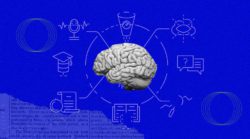
- Backtesting strategies. Generative AI can also be used to backtest trading strategies. This is done by simulating trades using historical data. This information can then be used to evaluate the effectiveness of trading strategies.
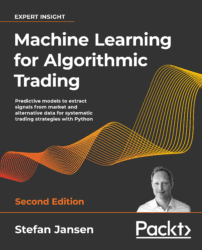
- Automating trading. Generative AI can also be used to automate trading. This is done by developing trading bots that can execute trades automatically. This can free up time for traders to focus on other aspects of their trading.
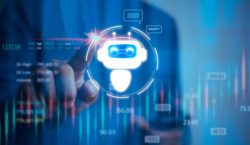
- Providing educational resources. Generative AI can also be used to provide educational resources for cryptocurrency traders. This can be done by creating educational materials such as articles, videos, and courses. This information can help traders learn about cryptocurrency trading and improve their trading skills.

- Creating new markets. Generative AI can also be used to create new markets for cryptocurrency trading. This can be done by developing new trading products and services. This can help to increase liquidity in cryptocurrency markets and make it easier for traders to buy and sell cryptocurrencies.
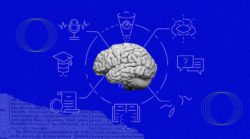
- Increasing transparency. Generative AI can also be used to increase transparency in cryptocurrency markets. This can be done by developing tools that allow traders to track trading activity and identify suspicious behavior. This information can help to protect traders from fraud and other risks.
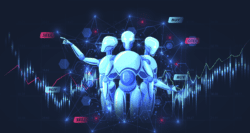
- Improving efficiency. Generative AI can also be used to improve the efficiency of cryptocurrency trading. This can be done by developing tools that automate tasks such as order placement and risk management. This can free up time for traders to focus on other aspects of their trading and make it easier for them to trade profitably.
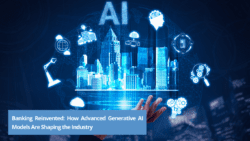
These are just a few of the ways that generative AI can be helpful in cryptocurrency trading. As the technology continues to develop, it is likely that we will see even more ways that AI can be used to improve the trading experience for cryptocurrency traders.




























































